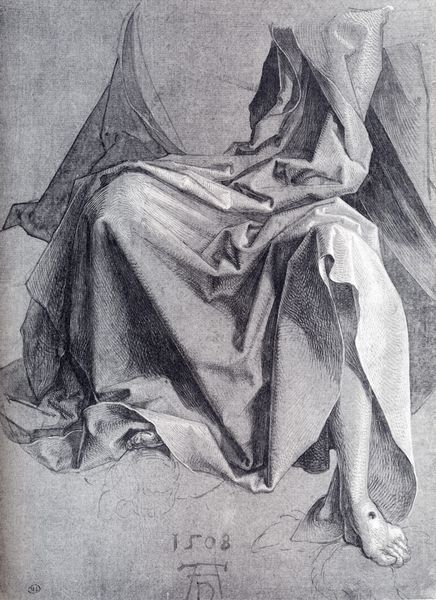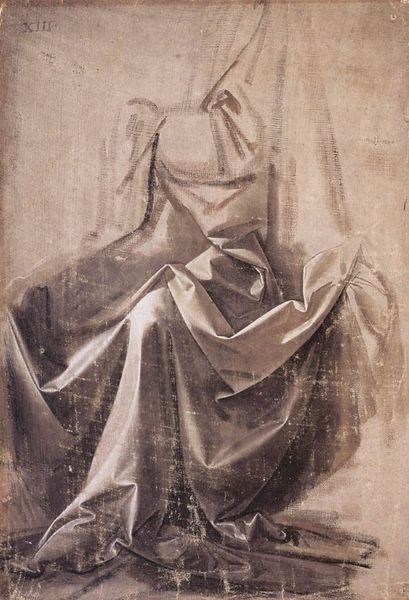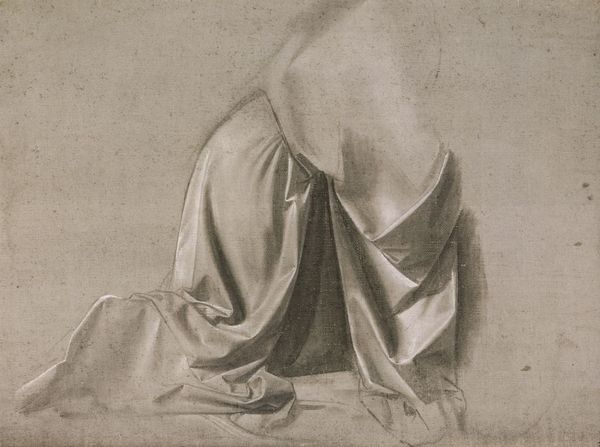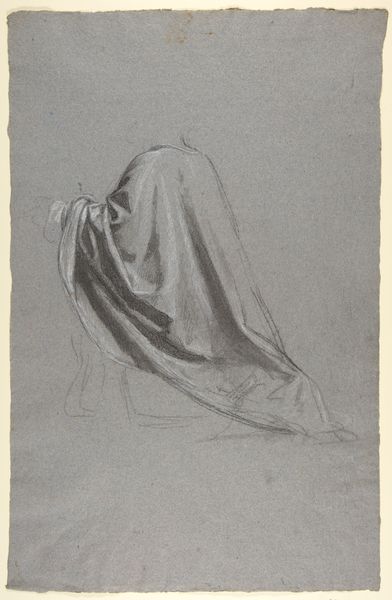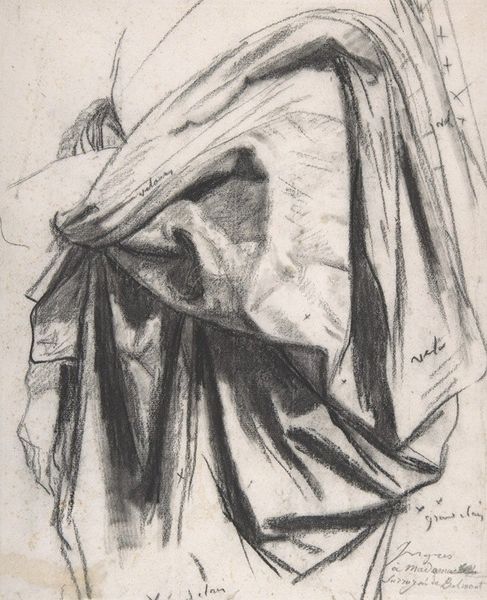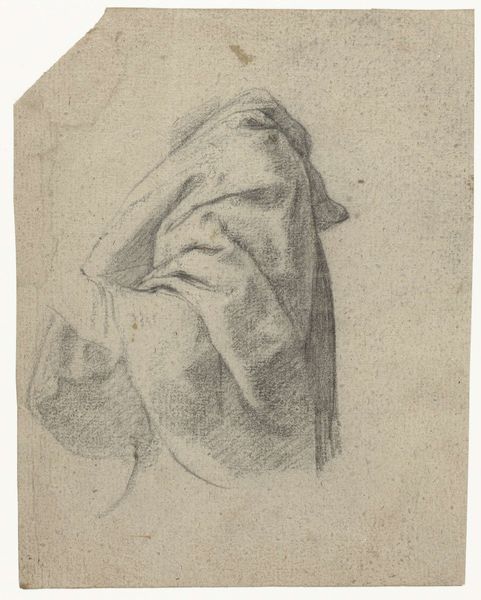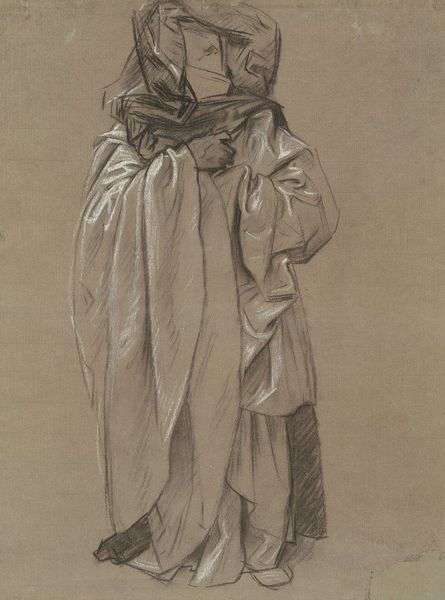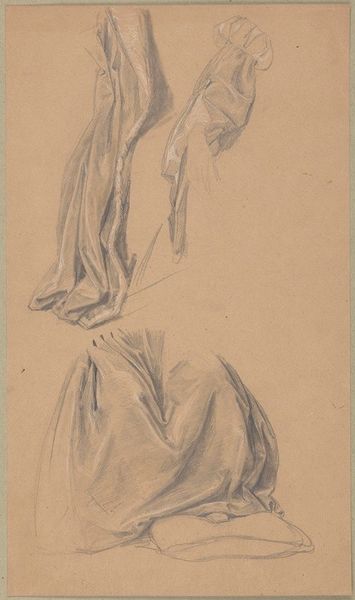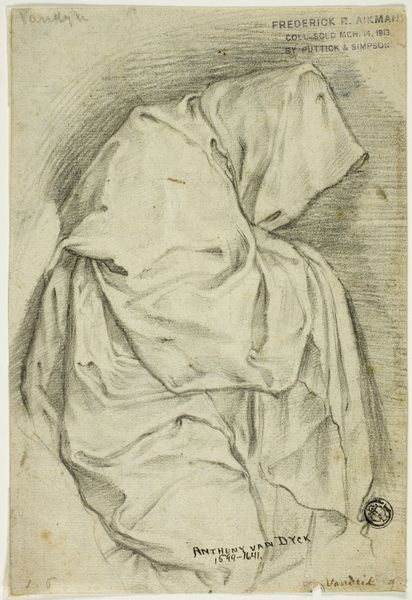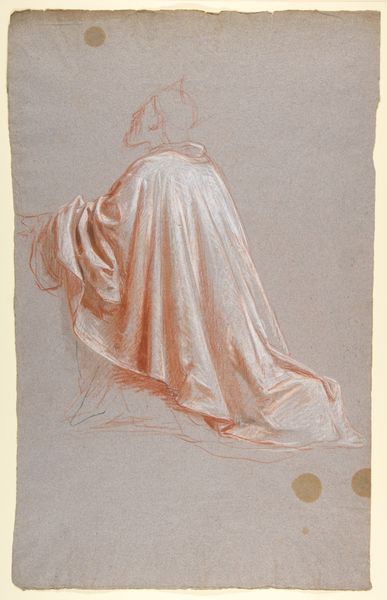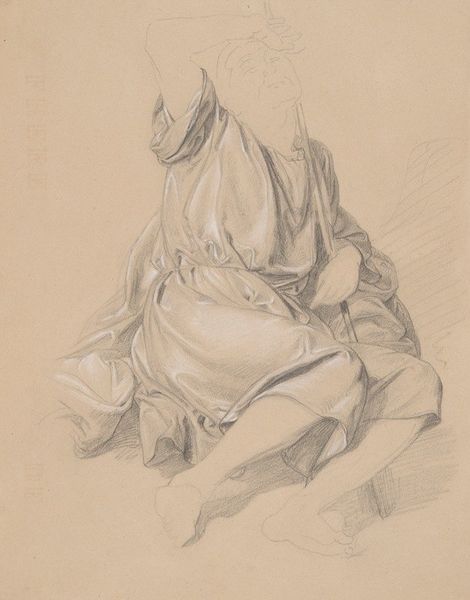
drawing, textile, charcoal
#
drawing
#
textile
#
charcoal drawing
#
form
#
11_renaissance
#
charcoal art
#
pencil drawing
#
charcoal
Dimensions: 18.1 x 23.4 cm
Copyright: Public domain
Editor: Here we have Leonardo da Vinci’s "Drapery for a seated figure," a charcoal drawing from 1470. I am struck by the softness he achieves with charcoal, it’s so tactile. How do you read this work? Curator: Beyond the visual impact, it’s vital to consider this drawing as a product of its time. During the Renaissance, the representation of drapery wasn’t just about aesthetics; it was deeply intertwined with societal power dynamics. Clothing signified status, gender, and even religious affiliation. Editor: I see... So the way Leonardo meticulously depicts these folds, it's not merely a study of form? Curator: Precisely. Think about the historical context: The Renaissance was a period of both immense artistic flourishing *and* rigid social hierarchies. Who got to wear what fabrics? Who controlled their production and trade? Consider too, that in representing draped figures in religious art, the artist was subtly alluding to their humanity. Does seeing the work this way change how you understand it? Editor: It does! It feels like a political statement now, or at least a commentary. Before, I saw skillful rendering; now I see layers of meaning connected to identity and power. Curator: Absolutely. And it reminds us that even seemingly simple sketches can offer profound insights into the complex social and political landscapes of the past. Editor: I’ll never look at drapery the same way again. It's all about power structures. Thanks. Curator: It's a dialogue, always; we all gain new appreciation for the many possible entry points into art.
Comments
No comments
Be the first to comment and join the conversation on the ultimate creative platform.
